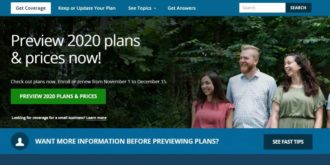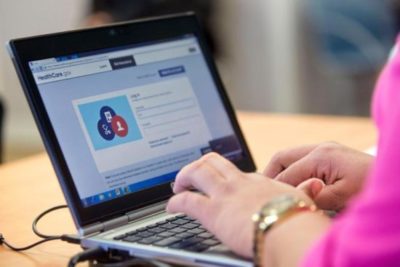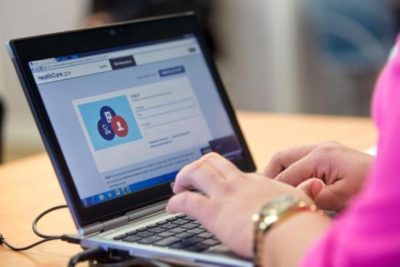More than 16,000 Georgians signed up for coverage on the state’s insurance exchange during the first two weeks of a special enrollment period ordered by President Biden.
That’s the third-highest total of any state, behind Florida and Texas, among the 36 states that let the federal government run their exchanges. (The other states run their own exchanges.)

The special sign-up period was created to help people dealing with the economic fallout of the COVID-19 pandemic.
And there may be more exchange enrollees coming for another reason.
The current COVID relief legislation in Congress would, for two years, allow enrollees to pay no more than 8.5 percent of their income toward coverage, down from nearly 10 percent now.
And those earning more than the current cap of 400 percent of the federal poverty level — about $51,000 for an individual and $104,800 for a family of four in 2021 — would become eligible for subsidy help, CNN reported.
That would eliminate the current situation known as the “premium cliff,” which has people who earn 401 percent of the poverty level paying much higher premiums than those who have only slightly lower income, said Bill Custer, an insurance expert at Georgia State University.
The change “would stabilize premiums for the whole market,’’ said Custer, adding that it could especially help people in rural areas.

“A whole lot of people would have access to coverage and not be trapped in jobs’’ they don’t like in order to keep health insurance, he said.
The bill would also guarantee that people with incomes up to 150 percent of poverty wouldn’t have to pay any premium for a benchmark midlevel plan, a step up from the higher-deductible plans they can buy with the current subsidies. That could mean the difference between having a $177 deductible instead of a $6,900 deductible plan, USA Today reported.
Russ Childers, an Americus health insurance agent, said the subsidy and other changes could help some middle-income people pay their premiums, and help many who barely afford insurance save money.
The exchanges were created by the Affordable Care Act (ACA) to let people who don’t have job-based or government coverage buy health insurance at affordable rates. Like some other insurance programs, the exchanges normally have a designated enrollment period, or window, so consumers don’t put off buying coverage until they have a health issue.
More than 500,000 Georgians signed up during the regular fall open enrollment period last year, to get coverage this year.
Deadline is in May
Nationally, more than 206,000 people signed up for ACA policies on federally run exchanges in the first two weeks of the special enrollment window, federal data released Wednesday showed.
Biden’s executive order opened up healthcare.gov for enrollment Feb. 15, and it lasts till May 15.

Before the creation of the special window this year, the only people who could enroll outside the regular period were those who had a “qualifying life event,’’ a change in situation such as getting married or losing a job.
The 16,636 sign-ups in Georgia were more than four times the number in the previous two years during the Feb. 15 through 28 time frame – 3,926 and 3,042, respectively.
Many of these new enrollees likely became eligible for the current subsidies because they lost income during the pandemic, Custer said.
Some may have experienced new medical needs and wanted coverage, he added.
Laura Colbert of the consumer advocacy group Georgians for a Healthy Future said the recent enrollees could include people who lost jobs and those who didn’t know about the fall enrollment period.
“A lot of people may not know that they were eligible for subsidies,” she added.
Before HealthCare.gov, the enrollment website, reopened, administration officials said they were about to launch a $50 million marketing and advertising campaign to promote the special sign-up period, the Washington Post reported.
Some cable and digital ads especially target Black and Latino communities — with some of the ads in Spanish.
The administration did not initially provide extra money to community groups that serve as enrollment coaches, known as navigators, the Post reported. This week, health officials announced they were giving the navigators a relatively small extra amount — $2.3 million for the rest of the extended sign-up window.


